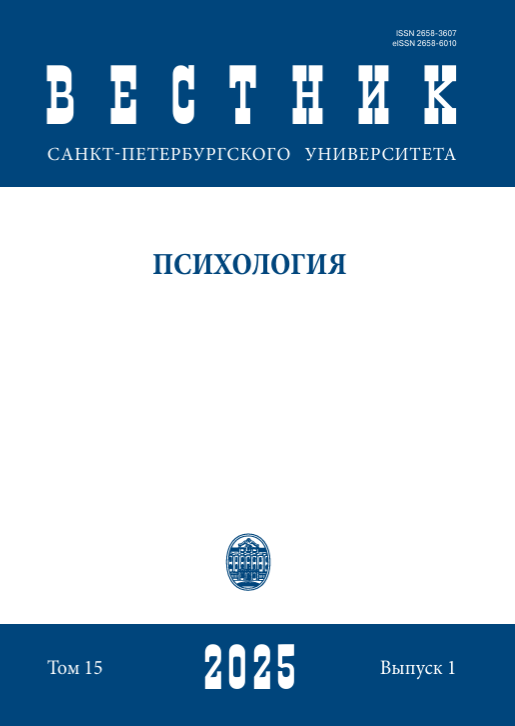Classification of facial expressions of emotional faces by people and a neural network based on an ecologically valid image database
DOI:
https://doi.org/10.21638/spbu16.2025.107Abstract
This paper investigates the problem of universal facial expression patterns for emotion valences, emotion families, and culturally specific emotions. Many studies have been conducted to address this problem, but they sometimes infer the universality of emotion expression from respondents’ recognition of emotions and use traditional image databases that do not meet the conditions of ecological validity. Four groups of theories about the origin of emotions are compared: the theory of universality of basic emotions, the theory of cultural specificity of basic emotions, the theory of social learning of emotions, and the theory of social construction of emotions. Purpose of the study: to determine whether people’s facial expressions have specific patterns for positive and negative valences of emotion (degree of positive or negative affective response), emotion families (includes basic emotion and variations of basic emotion), and specific emotions using an image database whose authors strived for ecological validity: subjects were not given a standard of facial expression patterns to demonstrate emotions. A teachable machine neural network was used to examine the expression process in a respondent-independent manner. Heterogeneous transfer learning was used. In our work, respondents and the neural network categorized images of emotional faces into 14 emotions. Respondents were more likely than the neural network to correctly classify specific emotions. Both the neural network and humans were more efficient at recognizing valence and emotion families than recognizing specific emotions. This may suggest specific patterns of emotion families and emotion valence. Weak specificity at the level of specific emotions is possible. The results are consistent with Scarantino’s “New BET” theory of basic emotions. An interpretation in line with the social learning theory of emotion is possible. The limitations of the neural network in recognizing the full range of variations in prototypical emotion expressions are discussed. Further possible cross-cultural studies to refine the results are described.
Keywords:
origin of emotion, basic emotions, constructivism, emotion classification, emotional expression
Downloads
References
References
Downloads
Published
How to Cite
Issue
Section
License
Articles of "Vestnik of Saint Petersburg University. Psychology" are open access distributed under the terms of the License Agreement with Saint Petersburg State University, which permits to the authors unrestricted distribution and self-archiving free of charge.





